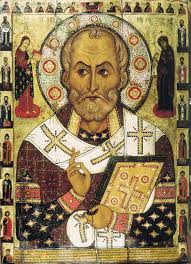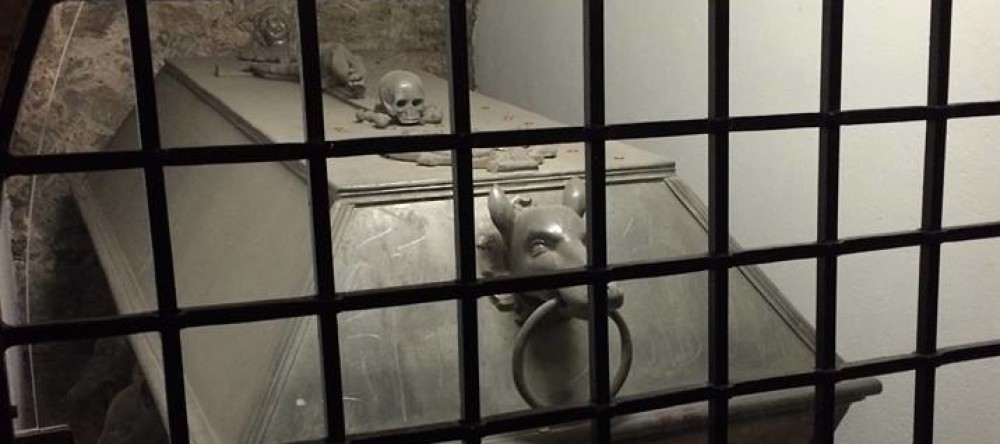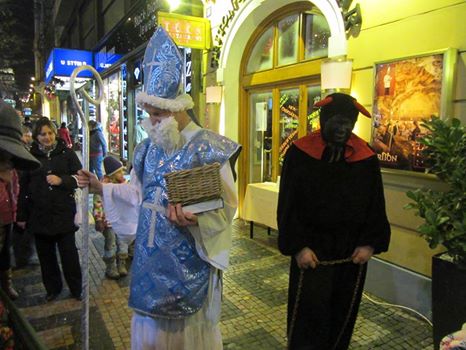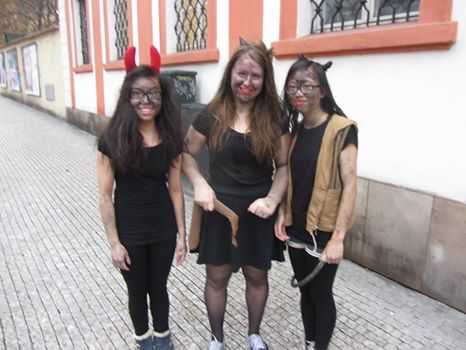
St. Nicholas, the 4th century bishop of Myra (in modern-day Turkey)often brings gifts to Dutch-speaking children on December 6, his feast.
St. Nicholas, whom most Americans now recognize as “Santa Claus,” was a 4th century bishop in Turkey who was imprisoned for objecting to the imposition of Arian beliefs on local churches by local civil authorities. He was famous for his acts of charity, especially toward youth. He is said to have raised 3 young men from the dead after they had been slaughtered by an innkeeper who was already salting their corpses to use as meat to feed the inn’s guests. St. Nicholas is also said to have thrown 3 bags of coins into the garden of his poverty-stricken neighbor, thus providing dowries for the man’s 3 daughters and saving them from lives of spinsterhood or prostitution.
According to another legend, during a great famine that Myra experienced in 311–312, a ship was in the port at anchor, which was loaded with wheat for the Emperor in Constantinople. Nicholas invited the sailors to unload a part of the wheat to help in time of need. The sailors at first disliked the request, because the wheat had to be weighed accurately and delivered to the Emperor. Only when Nicholas promised them that they would not suffer any loss for their consideration, the sailors agreed. When they arrived later in the capital, they made a surprising find: the weight of the load had not changed, although the wheat removed in Myra was enough for two full years and could even be used for sowing.
He is now said to bring gifts to children across the world — sometimes on his feast (December 6), as in the Netherlands, sometimes on Christmas Day (as in the United States). In many European countries, he brings gifts to the “good children” and coal to the “bad children.” But he is also said to often carry away the bad children in his large sack (now empty of gifts) or is even accompanied by a devil or servant who binds and takes away the children undeserving of a gift.
(Photos of 2014 celebration of St. Nicholas’ Day in Prague taken from the Prague Post, the English-language newspaper of Prague and the Czech Republic.)



Great post Stephen! I knew some of these stories attributed to St. Nicholas, but some were new to me. When I was an organist / choir director at an Episcopal church near Baltimore, Md., we always had a parishioner who dressed up as St. Nicholas around 12/6 every year and spoke to the children of the parish about Advent and Christmas.
Thanks, John! Yes, there are so many stories associated with St. Nicholas that it is difficult for any one person to know them all. One of my favorites describes how he and another were traveling to Nicea for the 1st Ecumenical Council but were attacked by bandits at night who decapitated the donkeys they were riding (to prevent pursuit); but, being in a rus to reach Nicea, Nicholas reattached the heads of the donkeys and the men resumed their trip but as the sun rose, they realized he had reattached the black donkey’s head to the white donkey’s body and vice-versa! But lest anyone think all the stories highlight his knd heart, he is also said to have punched Arius during the deliberations of the 1st Evumenical Council.